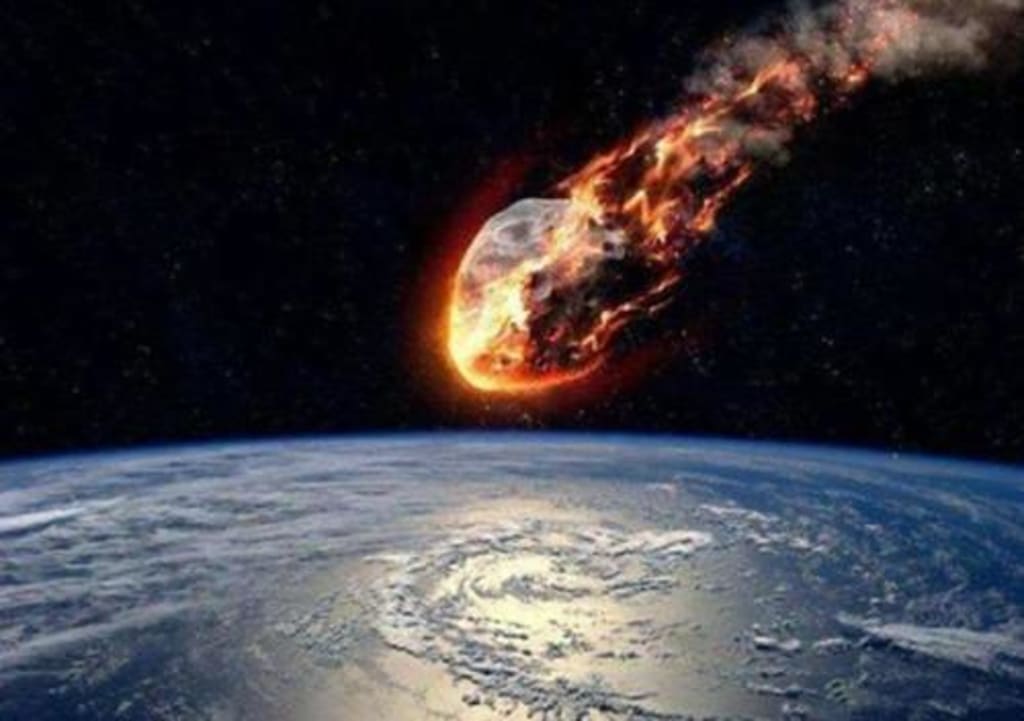It has been on earth for 80,000 years and is only 6.5 square meters in size, but weighs over 60 tons
It has been on earth for 80,000 years

When mankind researched the astronomical telescope, the first focus of observation is the moon. Through the lens of the telescope, we can see the face of the Moon more clearly, and the Moon impressed us most is the surface of those dense, endless number of craters.
Through those endless craters on the moon, we understand that the original solar system is not a safe environment, the moon for billions of years has suffered from the impact of countless asteroids, and the earth as the moon next to the planet, but also can not avoid the impact of various small stars. It is true, according to statistics, every year there are hundreds of thousands of meteorites fall to the Earth, and only most of the meteorites will be burned up after entering the Earth's atmosphere, and can not hit the ground. Even if a small portion of them do not burn up, when they hit the ground, they have become too small to cause any damage to the ground.
Moreover, since 71% of the Earth's surface area is the ocean, most of the meteorites will fall into the ocean after entering the Earth, so the impact power will be much weaker. Therefore, we rarely see meteorite craters on Earth, and it is because of the rarity of meteorites that their value is constantly being raised.
And meteorites also have high value in scientific research, because they come from space, some from stars in our solar system and some from outside our solar system, and by studying meteorites, we can understand the universe better. Meteorites are generally small and are very lucky to be able to pass through the frictional combustion of the atmosphere and retain some of the meteorites that fall to the ground.
It is because most meteorites that fall to the ground are very small that those that are larger are naturally more valued. The largest meteorite in the world today is the meteorite found in Goba, Namibia, which weighs 60 tons and is the famous Khobar meteorite.
This meteorite came to Earth 80,000 years ago and was discovered by a farmer in 1920 after 80,000 years on Earth. The Khobar meteorite is now found in the Khobar region of Namibia, Africa, and has a surface area of only 6.5 square meters, but weighs about 60 tons. According to scientists' research, the Khobar meteorite has been on Earth for more than 80,000 years, and its true age may be more than a billion years.
The Khobar meteorite, which contains 84% iron and 16% nickel, has remained in its original place without moving since its discovery. Every year, many tourists go to enjoy this huge meteorite up close, and many scientists have conducted a series of studies on it, hoping that it will allow us to learn more about the universe.
A meteorite is a name given to an extraterrestrial body that has fallen to Earth. It is essentially the same as a stone on Earth, except that it comes from outside the Earth and is the product of atmospheric combustion. Many people like to collect meteorites and speculate on their value, but in fact, the value of meteorites will hardly rise in the future but will become less and less valuable as human technology progresses, and finally become worthless as ordinary earth rocks.
Some people may not think so and think that meteorites are stones from outside the sky, so they are naturally very rare things. However, we have to understand that the basis on which the value of meteorites can be raised is the stagnation of human space exploration technology. As long as humans cannot yet do space mining, we want to get the stones above the outer planets is very difficult, but the value of meteorites naturally will not be reduced.
But in fact, we all understand that the speed of human technological development is very f it is possible that in less than a few decades, the era of space mining will come. At that time, it will still be difficult to obtain exoplanet stones? When there is a large number of stones from other planets on Earth, are meteorites still valuable? I believe that anyone smart will know that meteorites will have little value at that time.
We want to study the soil and rocks of Mars, we can easily transport back a large number of Martian rocks by spaceship, and still the original rocks, not destroyed by atmospheric burning. Now we feel very curious and attached to meteorites, but in the future, we will not pick them up even if we come across them at our feet.
Of course, if the era of space mining, ordinary exoplanet stones naturally will not cause our interest, but if it is some important stones is another story. To know the universe is a big treasure trove, only we can not think of, there is no non-existent, that time people are more interested in the belief that the heavy metal stones.
Of course, to achieve the kind of space exploration era we dream of, it will take a long time, for us now, the threat of asteroidstor the Earth is still huge, once a huge asteroid hit the Earth, it may trigger the sixth biological extinction event, that time human civilization may be ended.
65 million years ago, an asteroid hit the Earth, triggering a huge ecological change, dominating the Earth 160 million dinosaurs were extinct, while more than 80% of other creatures were extinct. With the current human technology, we are not capable of intercepting even small asteroids, let alone larger ones.
What we can do now is just to track some of the potential threats of the solar system asteroids, and always monitor their movements. Once these asteroids to the Earth, we can only do is quietly waiting for the fate of the fall, there is not the slightest way. Some people may say, we can use nuclear bombs to blow up asteroids, but, using rockets to launch nuclear bombs to hit asteroids, the effect is very weak.
It is because the threat of asteroids to humans is very big, so scientists have been actively exploring research related to interception technology we mastered the interceptiontechnothreatoffasteroidscanliftt otherwises,e the future fate of mankind to be subject to the huge threat of asteroids, no matter how many million years we have survived on Earth, asteroids to destroy us is only a very short time.
About the Creator
Carlo Phil
Science and art are two sides of a coin
Enjoyed the story? Support the Creator.
Subscribe for free to receive all their stories in your feed. You could also pledge your support or give them a one-off tip, letting them know you appreciate their work.






Comments
There are no comments for this story
Be the first to respond and start the conversation.